Deir el-Medina
Valley of the Artisans
Deir El-Medina is the modern Arabic name for a worker’s village. This village was the home of many artisans and craftsmen from Thebes. They built and decorated the royal tombs in the Valley of the Kings and the Valley of the Queens.
The workers who lived in a village called Pa Demi believed to be inspired by the gods. They created the eternal homes of deceased kings and their families. The village was officially named Set-Ma’at (The Place of Truth).
During the early Christian era, people abandoned the village. Monks later occupied the area and took over the Temple of Hathor. They used it as a monastery.

Deir el-Medina was unlike most villages in Ancient Egypt as it was a planned community. Amenhotep I (c.1541-1520 BCE) founded Deir el-Medina with the specific purpose of housing workers who would work on royal tombs. This was because tomb desecration and robbery had become a dangerous concern during his time. The royalty of Egypt decided not to advertise their final resting places with large monuments but instead chose a less accessible area in tombs cut into the cliff walls. These areas became known as the Valley of the Kings and the Valley of the Queens. The people who lived in the village were known as (Servants in the Place of Truth) and played an important role in creating eternal homes. They also had the responsibility of remaining discreet regarding tomb contents and locations.

Deir el-Medina was the home of the artisans and craftsmen of Thebes, who constructed and decorated the tombs of the royals.
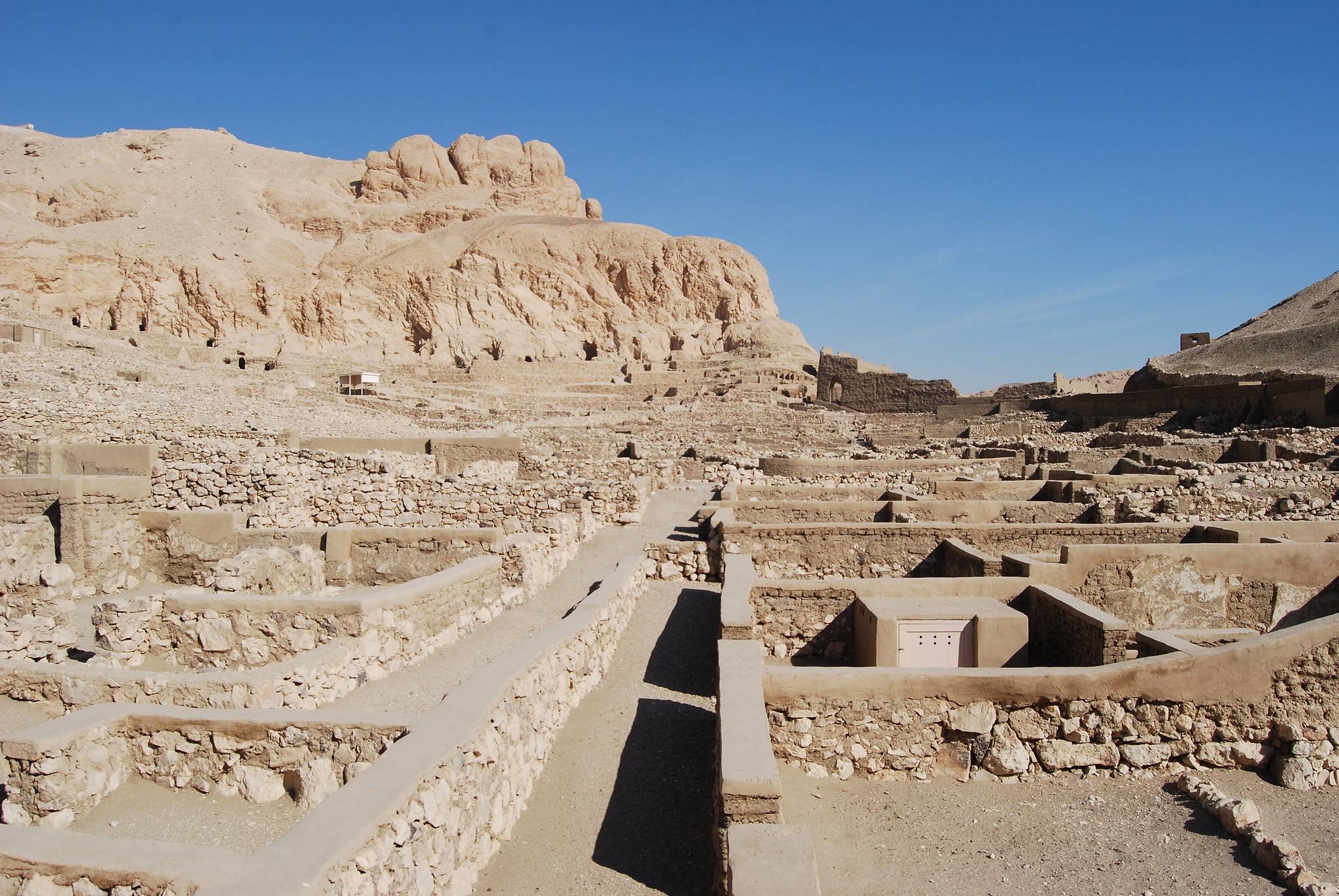
Deir el-Medina considered one of the most significant archaeological sites in Egypt, as it provides ample information about the daily life of its former inhabitants. The site was first excavated in 1905 CE by Italian archaeologist Ernesto Schiaparelli. Subsequently, other archaeologists continued the excavation throughout the 20th century CE, with French archaeologist Bernard Bruyere undertaking extensive work between 1922 and 1940 CE. While Howard Carter was unearthing the treasures of the royalty from Tutankhamun’s tomb, Bruyere was uncovering the lives of the working people who might have created that final resting place.
Luxor Tours & Activities
Looking to save some costs on your travel? Why not join a shared group tour to explore Luxor, Egypt? Here are some activities you might be interested in:
The Location of Deir El Medina

Residential Quarter
The residential quarter, also known as the workers’ village, was located in the southeastern part of the ancient settlement. It built in a small natural amphitheater, and the Valley of the Kings was just a short walk away to the south. The village may have been constructed separately from the rest of the population to maintain secrecy due to the sensitive nature of the work carried out in the royal tombs. At its peak, the community had around sixty-eight houses spread over 5,600 square meters.

Deir el-Medina is a significant Egyptian archaeological site that sheds light on the daily lives of its residents.
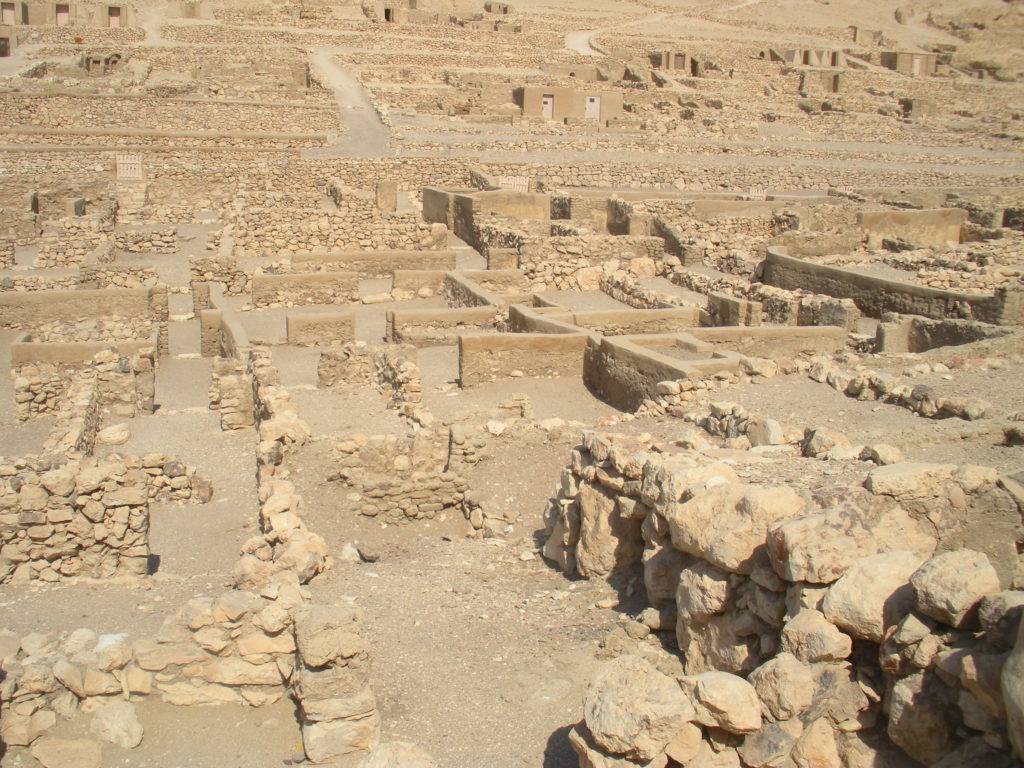
The villagers built a shelter over the main road of their village to escape the intense heat of the sun. The village, which is surrounded by walls, takes the shape of the narrow valley it sits in. However, the villagers abandoned the village around 1110-1080 BCE during the reign of Ramesses XI. The main reasons for the abandonment were the increasing threats of tomb robbery, Libyan raids, and the instability of civil war. Ramesses XI’s tomb was the last royal tomb built in the Valley of the Kings.
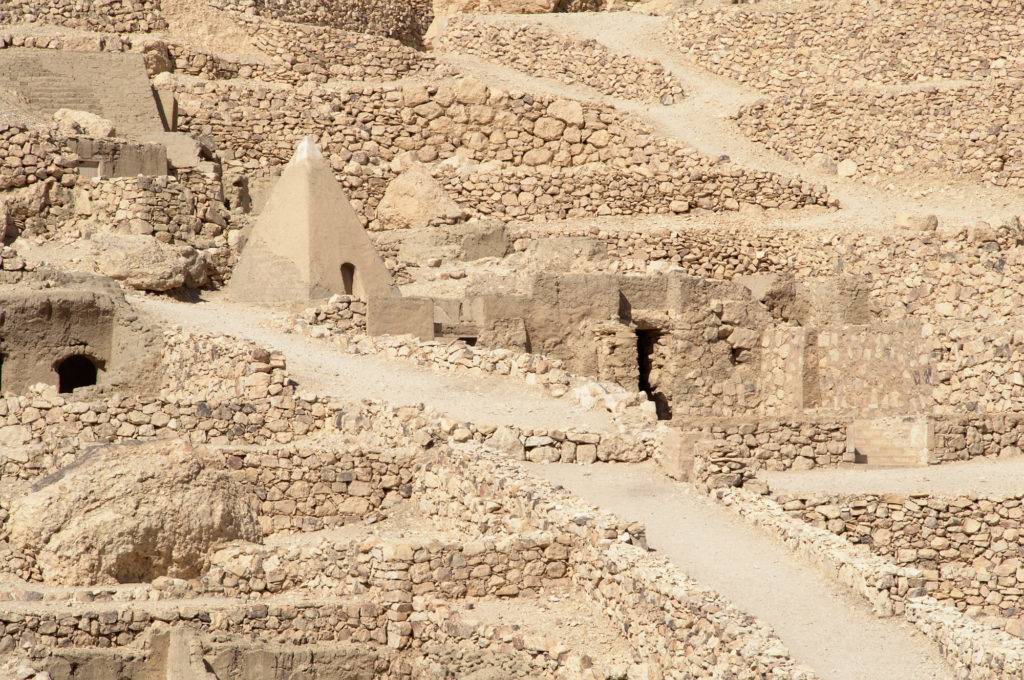
The villagers built a shelter over the main road of their village to escape the intense heat of the sun. The village, which is surrounded by walls, takes the shape of the narrow valley it sits in. However, the villagers abandoned the village around 1110-1080 BCE during the reign of Ramesses XI. The main reasons for the abandonment were the increasing threats of tomb robbery, Libyan raids, and the instability of civil war. Ramesses XI’s tomb was the last royal tomb built in the Valley of the Kings.
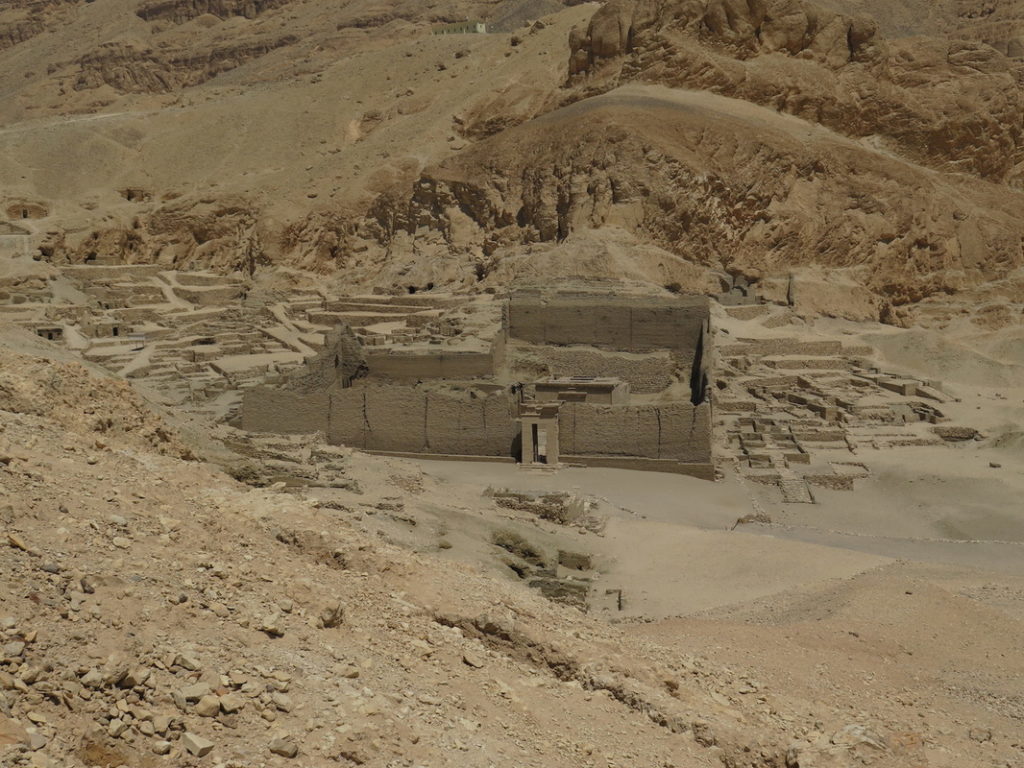
Amenhotep I Cult Temple
The temple located on a terrace above and to the right of the Ptolemaic temple at the North corner of the Workman’s village. Originally small, it was later expanded. The villagers dedicated the temple to Amenhotep and Ahmose Nefertari, his mother, who were both deified. Parts of the temple remain, along with the remains of the nearby Hathor Chapel of Seti I. The walls and steps have been lovingly and carefully reconstructed through excavations so that future visitors can get an impression of its once layout. It is worth visiting the site to see what there is to offer. The temple has an outer and inner hall, Pronaos, and Shrine. Two steps led into the Pronaos, which decorated with a wall surrounded by red, white, and black horizontal bands. Upon his death, Amenhotep was deified and made the patron deity of the village, which he opened at Deir el-Medina. Amenhotep and his mother were especially worshipped here and were revered for almost five hundred years as local deities.
Amenhotep I became king of ancient Egypt at a young age, when his mother, Ahmose Nefertari, acted as regent. His father, Ahmose I, had expelled the Hyksos kings from Egypt. Amenhotep I had a temple built at Karnak, which was mentioned by his chief architect, Ineni. Although nothing remains of the temple dedicated to Amenhotep I’s parents, numerous statues were found at the site by archaeologists. Some events can be seen from inscriptions found in private tombs. Amenhotep I led campaigns to Kush and Libya, which are mentioned in various inscriptions.
The third month in the ancient Egyptian calendar, known as Peret, was devoted to Amenhotep I, who became a fairly major deity with several festivals throughout the year. Several rituals were held at Deir el-Medina in his honor, portraying his death, burial, and resurrection. Most houses during the Ramesside period contained a scene in one of their rooms, honoring Amenhotep I and his mother, Ahmose Nefertari. They were usually depicted with black or blue skin, the colors of resurrection.
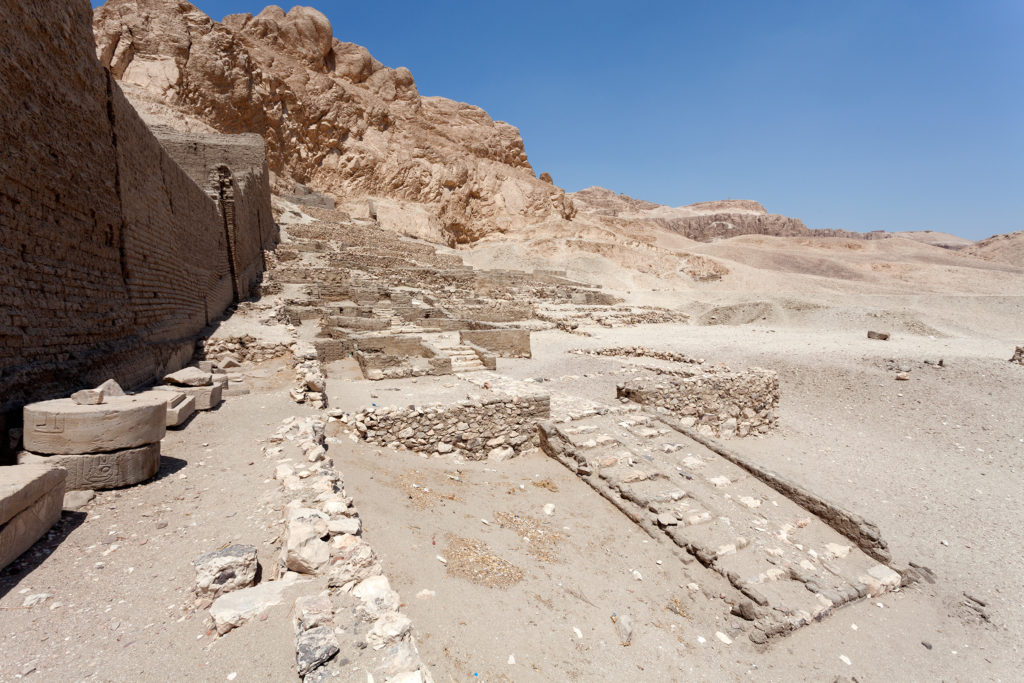
Chapel of Hathor
The Hathor Chapel of Seti I, located on the right side and to the north of the Ptolemaic Temple in Deir el-Medina, is now in ruins. However, it has been beautifully reconstructed to show its original layout. The chapel built by Seti I between 1294 and 1279 BC for the village workers of Deir el-Medina. Just to the left side of the chapel, there are some well-preserved carved relief stone blocks depicting Hathor. The Amenhotep I Temple built by the villagers just above the Hathor Chapel and dedicated to Amenhotep I, who built the village for the workers. Upon his death, Amenhotep was deified and made the patron deity of the village.
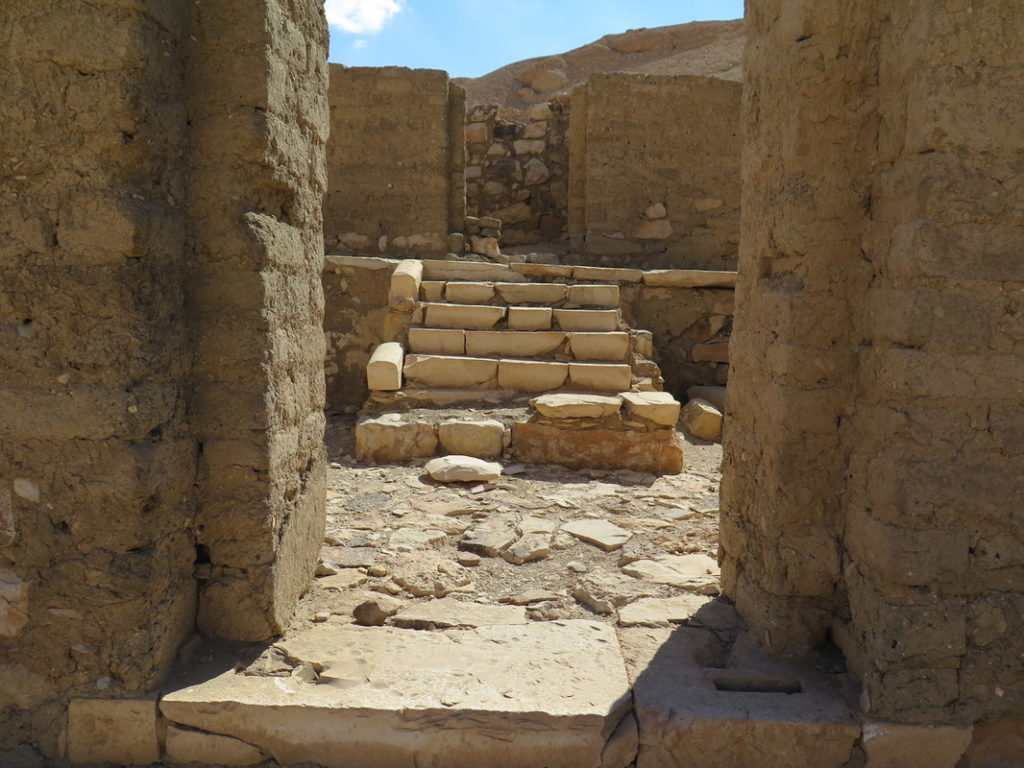
Amun Temple
The Amun Temple and Chapel of Ramesses II, which built between 1279 and 1213 BCE, is situated in front of the Ptolemaic Temple and opposite the Hathor Chapel of Seti I and Amenhotep I temple. Despite its historical significance, it is often overlooked and missed by visitors. The temple excavated by a French team in 1939-1940.
The Tripartite Sanctuary dedicated to the Theban Triad. There is a chapel to the left and north of the temple, which is currently used as a storage area for pottery and shards. A statue of Vizier Panchesy unearthed in this chapel during excavations. The temple is relatively small, with later mud brick additions in front and to the right of the entrance. Unfortunately, it is in a poor state of repair, with many parts now disarrayed and missing.
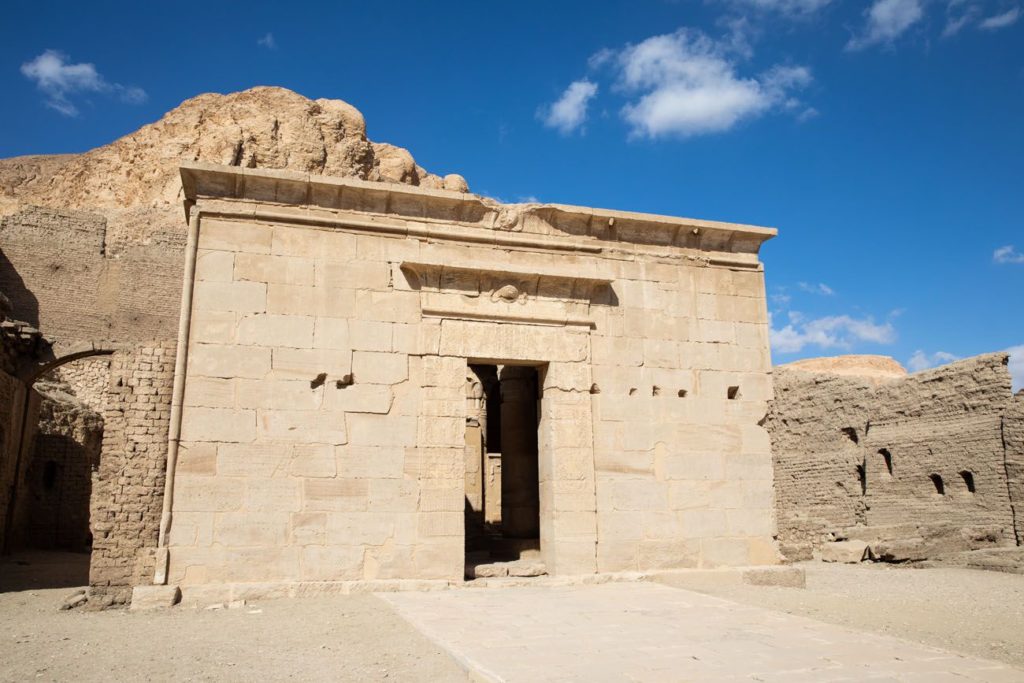
Ptolemaic Temple of Hathor
The temple of Hathor is the last in a series of temples on this site dating back to the foundation of the village. It is located at the northern end of the village, opposite the tombs of Senedjem and Anherkhau, and is only 15 x 24 meters in size. The temple surrounded by a 50-square-meter enclosure wall.
In ancient times, the temple was well-visited and covered in graffiti left by Greek travelers, Coptic visitors, and wealthy Europeans doing the grand tours of the bygone modern era. The graffiti includes a drawing of a camel done by the Blemyes, an Ethiopian Christian group.
The temple was built and decorated by Ptolemy IV Philopater and later Ptolemaic Kings in a rock bay to replace an earlier building from the New Kingdom that had been damaged by the Persians and repaired by Ptolemy II and III. A cult terrace constructed opposite the temple entrance, on the east wall of the enclosure. The temple fronted by a staircase of Ramesses II.
The plain exterior walls of the temple enclosed an interesting architectural arrangement that unites an entrance hall or forecourt, which includes columns with papyrus capitals done in the late period style, with the facade of a pronaos. The pronaos front rises on a step behind the entrance hall and has two columns with composite.
During the Christian era, the temple of Hathor converted into a church.
F.A.Q
6:00 AM- 5:00 PM Every Day
200 EGP
More than 5,000 ostraca were uncovered, and their translation indicated that they were the documentary and literary archives of the Ramesside community of artisans who lived at Deir el-Medina.
It is well-known as the site of a village for artisans who worked on royal tombs, especially those in the surrounding Valley of the Kings.
